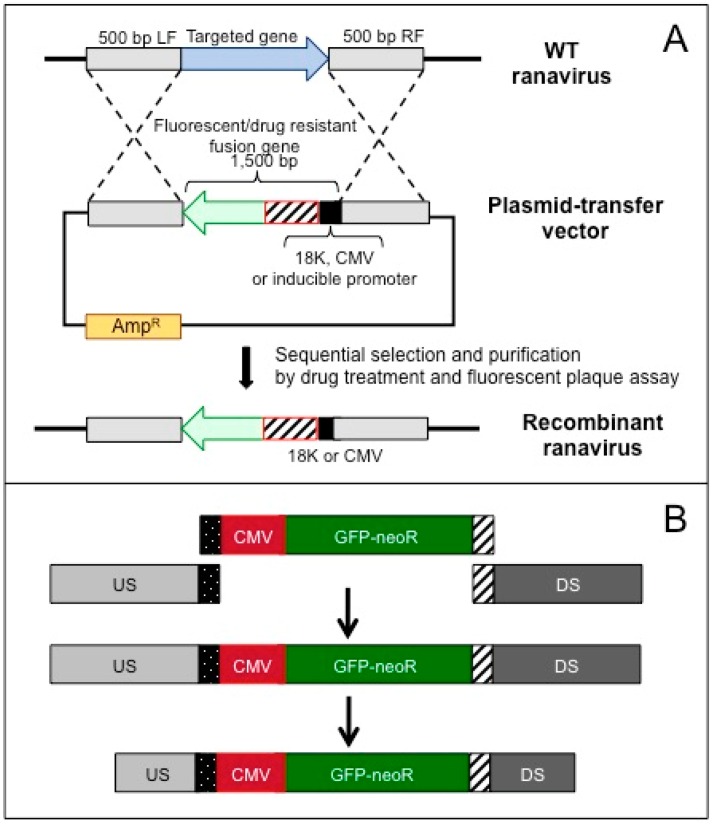Figure 1.
(A) Schematic for generating ranavirus recombinant by site-specific integration of a selection cassette. This cassette consists of a fluorescent reporter gene fused to a drug resistance gene by a short linker that is under the control of a ranaviral or ectopic promoter. This cassette is flanked by a left and right sequence portion (500 bp) of the targeted site and is cloned into a convenient bacterial plasmid. Cells are transfected with the construct using lipofectin and then infected with wt ranavirus to generate homologous recombination. The selection is performed sequentially by virus replication in the presence the drug and then by isolation of fluorescent plaques. (B) Schematic representation of the standardized process to generate a recombination cassette for Ambystoma tigrinum virus (ATV). Primers are designed to amplify the neomycin resistance (GNR) cassette as well as approximately 1000 nt of the upstream (US) and downstream (DS) flanking sequences for each target open reading frame (ORF). Adapter sequence added to the 3′ end of the US sequence and the 5′ end of CMV promoter. In addition, a different adapter is added to the 3′ end of the cytomegalovirus promoter (CMV-GNR) cassette and the 5′ end of the DS sequence. A standardized overlapping PCR protocol assembles the recombination cassette that is then agarose gel purified and re-amplified using primers that truncate the US and DS sequences t. This PCR product is then used to generate a recombinant virus.

